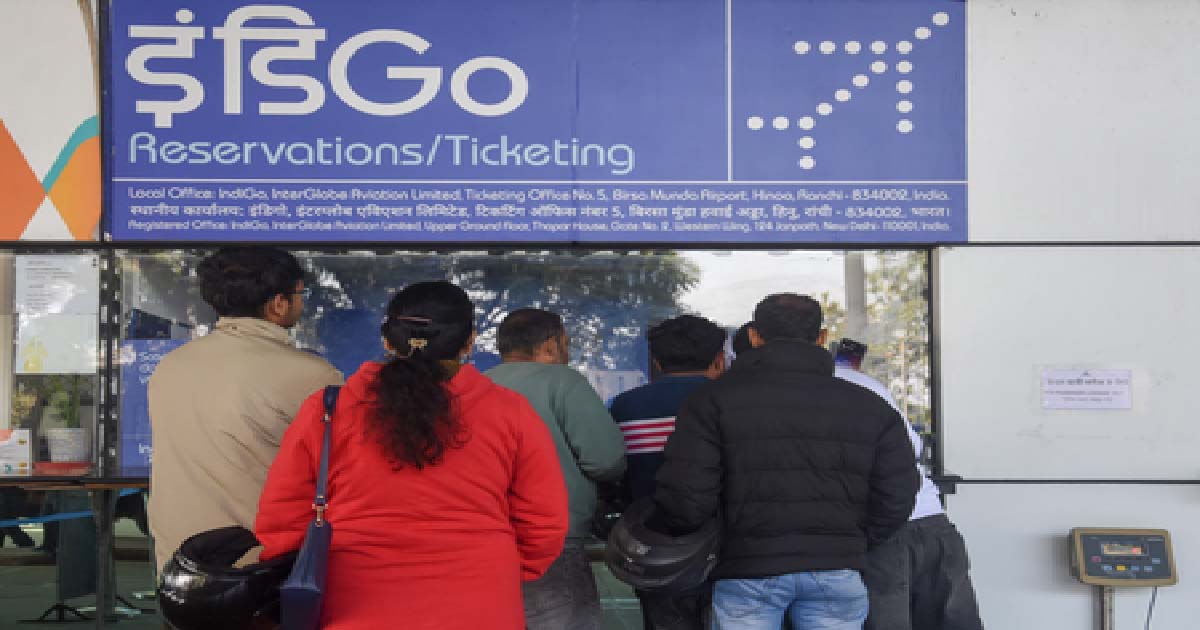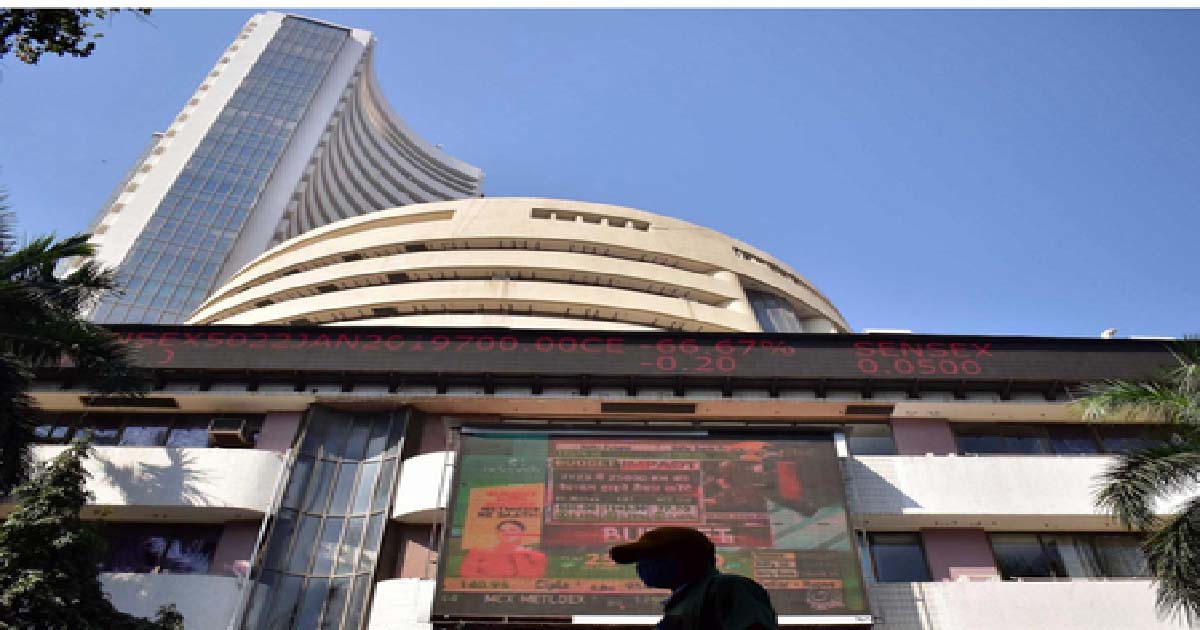Business
India Inc revenue likely grew 18-20% on-year in 2nd quarter
Higher commodity prices and continued revival in demand for consumer discretionary products likely lifted corporate revenue 18-20 per cent on-year to Rs 8.2 lakh crore in the second quarter of this fiscal, indicates a CRISIL Research study of 300 companies (excluding from the financial services and oil sectors) that account for 55-60 per cent of the market capitalisation of the National Stock Exchange.
Revenue from consumer discretionary products such as automobiles likely spurted 19-21 per cent on-year, aided by higher realisations and volume.
Construction-linked sectors are estimated to have grown 22-25 per cent on-year, benefiting from the low-base effect of last fiscal.
Overall revenue growth would be primarily supported by price hikes driven by costlier commodities. On-year volume growth would be mostly in single digit across key segments except commercial vehicles. To be sure, growth momentum would have slowed compared with the 47 per cent on-year increase seen in the first quarter.
On a sequential basis, overall revenue is likely to have grown 8-10 per cent.
Revenue from consumer discretionary products is expected to have risen 23-25 per cent sequentially after demand was hit by the second wave of the Covid-19 pandemic in the first quarter.
Construction-linked sectors are estimated to have grown a moderate 3-5 per cent as seasonal weakness slowed down execution and volume growth.
Revenue in the automobiles sector is estimated to have grown 27-30 per cent sequentially, led by an increase in realisations. That, in turn, is expected to steer growth for ancillary segments such as auto components and tyres, which have likely grown a robust 12-14 per cent and 6-10 per cent on-quarter, respectively.
Overall revenue of the sample set is expected to have risen to Rs 15.8 lakh crore in the first half of this fiscal, up 30- 32 per cent on-year.
Says Hetal Gandhi, Director, CRISIL Research, “Elevated commodity prices and healthy realisations would lead to better revenue performance across sectors in the second quarter. As many as 24 of the 40 sectors represented by these 300 companies have likely grown over 20 per cent on-year. But overall revenue growth would be a notch lower at 15-17 per cent excluding commodity sectors such as steel and aluminium. On a sequential basis, it could be even lower at 8-10 per cent, with export-linked sectors such as IT services and pharmaceuticals proving to be drags, even though growing at a stable 4-6 per cent.”
The moderation in revenue growth is expected to have trickled down to earnings before interest, tax, depreciation, and amortisation (Ebitda), which is estimated to be up an average 5-7 per cent sequentially. From an on-year perspective, that would be 24-27 per cent higher because of the low-base effect.
Consequently, operating profitability, as represented by the Ebitda margin, would have narrowed by 40-80 bps on- quarter as a complete pass-through of the sharp increase in raw material cost would not have been possible.
Nearly half of the 40 sectors are expected to log a sequential drop in Ebitda margin amid rising input prices. While overall margins may have continued to improve on-year to 100-120 bps, excluding companies in the aluminium and steel products segments, it would have contracted 30-70 bps.
“The ability of companies to pass on the surge in commodity prices is limited, which caps the rise in margins. Crude oil prices are up 71 per cent in the second quarter on-year, and steel 47 per cent. Power and fuel expenses have risen because of 2x higher coal prices and over 4x higher spot gas prices. These would add to the woes, leading to margin contraction in the power and cement sectors,” adds Hetal Gandhi.
For the first half of this fiscal, overall Ebitda margin (for 300 companies) is estimated at 22-24 per cent, marking an expansion of 200-250 bps on-year, and driven by a 380 bps expansion in the first quarter.
Business
IndiGo disruptions may cause revenue loss, penalties to company: Report

New Delhi, Dec 8: Widespread flight disruptions at IndiGo are credit negative, and refunds and compensation could cause it “significant financial damage”, credit rating agency Moody’s warned on Monday.
In a note, Moody’s said that regulatory penalties from the Directorate General of Civil Aviation (DGCA) remain possible as the airline failed to plan for aviation rules communicated over a year earlier.
The crisis struck as the airlines entered their peak winter schedule, with “significant lapses in planning, oversight and resource management” as the Phase 2 of the Flight Duty Time Limitation (FDTL) rules were introduced on November 1, 2025, after being communicated more than a year earlier, it noted.
The rules reclassified midnight–6 a.m. duties as night duty and cut permissible landings in 24 hours from six to two or three. The agency said that IndiGo’s lean operating model lacked resilience to integrate the change, forcing a system‑wide schedule reset.
Over 1,600 flights were cancelled on December 5, and over 1,200 were grounded in November, with cancellations beginning on December 2. Moody’s said IndiGo is yet to fully restore normal operations.
IndiGo said it was set to operate over 1,800 flights on Monday, up from 1,650 on Sunday, adding that more than 4,500 bags have been delivered to respective customers, and “we are on track to deliver the rest in the next 36 hours”.
The airline said it expects a return to full schedules by mid-December, adding that it is working “round the clock” to normalise operations.
It has so far refunded Rs 827 crore to affected passengers, and the rest is under process for cancellations up to December 15.
Union Civil Aviation Minister K. Rammohan Naidu said in the Parliament on Monday that the government has initiated a thorough inquiry into the matter.
“IndiGo was supposed to manage the crew and roster…We will take strict action. We will set an example for every airline. If there is any non-compliance, we will take action,” he said on the floor of the Rajya Sabha.
Business
IndiGo Crisis Day 7: Mumbai Feels The Heat As Week-Long Flight Issues Deepen Nationwide; 32 Cancellations Reported Today

Mumbai: air travel schedule remained heavily disrupted on Monday as IndiGo’s nationwide operational meltdown stretched into its seventh straight day, causing widespread cancellations across major Indian airports. While the crisis has affected passengers throughout the country, Mumbai, one of IndiGo’s busiest hubs, continued to witness major cancellations that derailed travel plans from early morning.
By 7 am, Mumbai’s Chhatrapati Shivaji Maharaj International Airport had recorded 32 IndiGo cancellations, 10 arrivals and 22 departures, impacting key routes to Chandigarh, Nagpur, Bengaluru, Hyderabad, Goa, Darbhanga, Kolkata and Bhubaneswar. Airport officials said the ripple effect of the disruptions was expected to continue through the day, adding to the nationwide tally of 309 flights impacted by Monday morning.
Across India, more than 224 cancellations were pre-planned and communicated to passengers, officials confirmed, as the airline attempted to manage the crisis strategically. IndiGo had reportedly begun processing 100 per cent refunds for passengers booked up to December 6, even as fresh cancellations continued to pile up.
Delhi’s Indira Gandhi International Airport reported the highest number of disruptions, with 134 IndiGo flights cancelled, 75 departures and 59 arrivals, making it the epicentre of the crisis. In response, the airport issued a public advisory urging passengers to check real-time flight status before heading out. Authorities said they were coordinating with airline teams to minimise chaos inside terminals.
Bengaluru’s Kempegowda International Airport confirmed 127 cancellations, 65 arrivals and 62 departures. Officials said the next status update would be provided later in the evening. Hyderabad’s Rajiv Gandhi International Airport recorded 77 disruptions, splitting between 38 arrivals and 39 departures.
At Srinagar Airport, 16 flights (8 arrivals and 8 departures) were cancelled, while Ahmedabad reported 18 cancellations by 8 am. Passenger crowds were also reported at terminals in Chennai, Jaipur and Mumbai, where many travellers waited for updates amid confusion.
Amid the escalating crisis, aviation regulator DGCA granted IndiGo CEO Pieter Elbers and COO Isidro Porqueras a one-time extension until 6 pm Monday to respond to the show-cause notice issued on December 6. The airline sought extra time citing “operational constraints linked to the scale of nationwide disruptions.” The DGCA, however, warned that no further extension will be granted, and said it would proceed ex parte if the reply is not submitted on time.
Business
Sensex, Nifty open lower amid lack of domestic triggers

Mumbai, Dec 8: Indian stock markets started the week on a weak note on Monday as benchmark indices opened lower in the absence of strong domestic cues.
The Sensex slipped by 93 points, or 0.11 per cent, to trade around 85,619. The Nifty also drifted lower and was seen at 26,137, down 50 points or 0.19 per cent.
Analysts said that Nifty is expected to trade within a defined range today, with near-term resistance placed around 26,300-26,350, where profit-booking may emerge.
“On the downside, support is seen around 26,000-26,050, a zone that has held firm through recent consolidation,” experts said.
Several heavyweight stocks dragged the indices in early trade. Shares of Bajaj Finance, BEL, NTPC, Asian Paints, Power Grid, Trent, Sun Pharma, and ICICI Bank were among the biggest losers on the Sensex.
At the same time, some major technology and auto names helped limit the downside. Eternal, Tech Mahindra, TCS, Tata Motors PV, Infosys, HCL Tech and Tata Steel were the top gainers.
The broader market also showed signs of pressure. The Nifty MidCap index slipped 0.12 per cent, while the Nifty SmallCap index fell more sharply, declining 0.40 per cent.
Sector-wise, real estate, public sector banks, and pharmaceutical stocks were under the most selling pressure, with the Nifty Realty, PSU Bank, and Pharma indices falling between 0.3 per cent and 0.5 per cent.
On the other hand, the Nifty IT index managed to rise 0.5 per cent, supported by gains in large tech stocks. The Nifty Metal index also inched up by 0.2 per cent.
Analysts said that the market mood remained cautious in early trading as investors awaited fresh triggers to set the direction for the day.
“Given the prevailing conditions, a buy-on-dips strategy remains appropriate. Traders may consider adding long positions if Nifty pulls back toward 26,000-26,050 or if Bank Nifty finds stability above 59,400,” market watchers added.
-

 Crime3 years ago
Crime3 years agoClass 10 student jumps to death in Jaipur
-

 Maharashtra1 year ago
Maharashtra1 year agoMumbai Local Train Update: Central Railway’s New Timetable Comes Into Effect; Check Full List Of Revised Timings & Stations
-

 Maharashtra1 year ago
Maharashtra1 year agoMumbai To Go Toll-Free Tonight! Maharashtra Govt Announces Complete Toll Waiver For Light Motor Vehicles At All 5 Entry Points Of City
-

 Maharashtra1 year ago
Maharashtra1 year agoFalse photo of Imtiaz Jaleel’s rally, exposing the fooling conspiracy
-

 National News1 year ago
National News1 year agoMinistry of Railways rolls out Special Drive 4.0 with focus on digitisation, cleanliness, inclusiveness and grievance redressal
-

 Maharashtra1 year ago
Maharashtra1 year agoMaharashtra Elections 2024: Mumbai Metro & BEST Services Extended Till Midnight On Voting Day
-

 National News1 year ago
National News1 year agoJ&K: 4 Jawans Killed, 28 Injured After Bus Carrying BSF Personnel For Poll Duty Falls Into Gorge In Budgam; Terrifying Visuals Surface
-

 Crime1 year ago
Crime1 year agoBaba Siddique Murder: Mumbai Police Unable To Get Lawrence Bishnoi Custody Due To Home Ministry Order, Says Report












